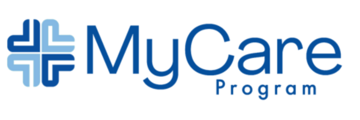Brief Overview: Chronic constipation refers to constipation that is present for at least 3 months. It is very common and there are many causes. Some of the main symptoms of constipation are hard stools, excessive straining/difficult to pass stools, and infrequent bowel movements (less than 3 bowel movements per week).
Prevalence: According to UpToDate, “The estimated prevalence of chronic constipation in North America is 12 to 19 percent.”
Etiology: Chronic constipation can be classified as primary or secondary, but often has multiple contributing factors:
- Primary: chronic idiopathic constipation (including defecatory dysfunction, slow transit constipation, functional constipation)
- Secondary:
- IBS
- Neurogenic disorders: spinal cord injury/disease, Parkinson disease, MS, Hirschsprung disease, Chagas disease, chronic intestinal pseudo-obstruction
- Endocrine/Metabolic: hypercalcemia, hypokalemia, diabetes mellitus, hypothyroidism
- Obstructive – colorectal cancer, rectoceles, strictures
- Medication-induced
- Myopathies: systemic sclerosis, amyloidosis, etc
- Other: pregnancy, anorexia nervosa, celiac disease
Risk Factors:
- Female
- Age > 65 years
- Decreased caloric intake
- Physical inactivity
- Low socioeconomic status
- Chronic opioid use
- Pregnancy
- Celiac disease
- Anorexia nervosa
Commonly Associated Conditions:
- IBS-C
- Hypothyroidism
- Hypercalcemia
- Parkinson’s
- Diabetes
Common Medications:
- Bulk-forming laxatives: Metamucil, Citrucel, FiberCon, Benefiber
- Osmotic laxatives: MiraLAX
- Stimulant laxatives: Bisacodyl, Senna
- Fiber supplementation – dietary, bran
- Secretagogue if other options are ineffective: linaclotide, plecanatide
Common Labs, Imaging, and Tests:
- Lab tests: CBC, serum glucose, HgbA1c, calcium, potassium, TSH, serologic testing for celiac disease (if applicable)
- Colonoscopy if warranted based on symptoms or 45 years old or older
Common Symptoms:
- Hard stool
- Abdominal discomfort
- Excessive straining
- Less than 3 bowel movements per week
- Sensation of incomplete evacuation
- Use of manual maneuvers to facilitate defecation
Common Treatments:
- Mediations (see above)
- Treatment/management of any underlying conditions
- High-fiber diet, fiber supplementation
- Regular physical activity
- Adequate fluid intake
- Lifestyle modifications – proper defecation posture, timing of defecation
Physical Findings:
- Abdominal exam typically normal
- Sometimes hard stool can be palpated in lower abdomen (usually LLQ)
Potential Complications and Contraindications:
- Hemorrhoids, anal fissures
- Fecal impaction
- Contraindication to, and/or caused advised, with certain medications for older adults
General Health and Lifestyle Guidance:
- Habit Training: According to UpToDate habit training can be helpful. Advice is: “attempt a bowel movement at least twice a day, usually 30 minutes after meals, and to strain for no more than five minutes”
- Discuss specific fluid intake recommendations with your healthcare provider
- Discuss recommended amount of daily fiber intake with your healthcare provider. High fiber foods include: fruits, vegetables, legumes, whole grains
- Engage in regular physical activity (if this is approved by your healthcare provider)
Suggested Questions to Ask Patients:
- How often do you have a bowel movement?
- Do you have to strain or use laxatives regularly?
- Are your stools hard or painful to pass?
- What is your typical diet and fluid intake like?
- Have you had any recent changes in weight, appetite, or blood in the stool?
Suggested Talking Points:
- PCP may be able to manage this condition, but may also need referral to GI
- Acupuncture may be helpful, if this is something the patient is interested in and has access to/the resources for
- Keep a symptom diary and stool log to report to your healthcare provider
- Report any new or worsening symptoms to your healthcare provider
Sources:
- UpToDate
